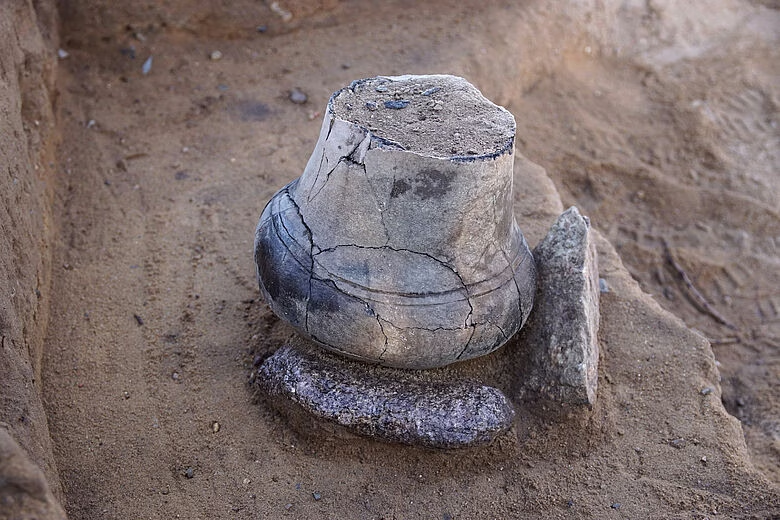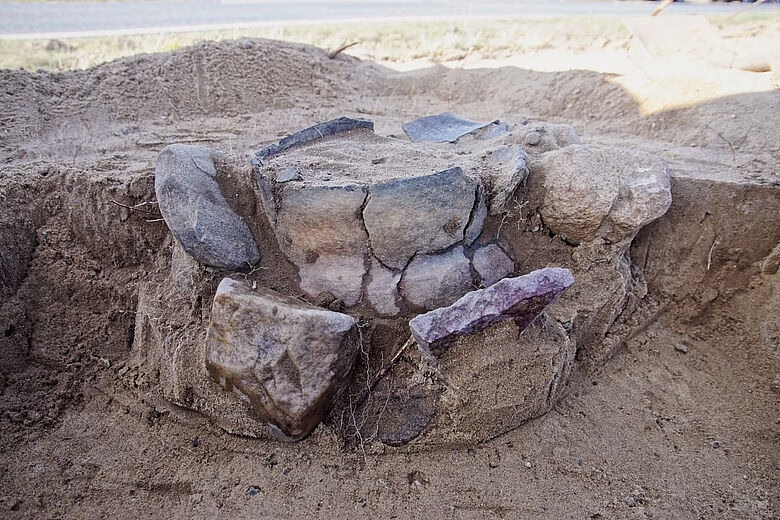Nearly 3,000 Years Old, These Burial Artifacts Offer Rare Insight into Ancient Lives
A routine infrastructure upgrade in Lower Saxony has led to an extraordinary archaeological discovery: a collection of remarkably well-preserved Bronze Age cremation urns dating back nearly 3,000 years. Experts are hailing the find as one of the most important in recent memory.
During preliminary work for a drainage project along County Road K17—between the towns of Moisburg and Immenbeck—archaeologists from the Hamburg Archaeological Museum uncovered approximately 30 Late Bronze Age graves (circa 1200–600 BCE). Each contained cremation urns carefully enclosed in stone, revealing an ancient burial ground preserved beneath layers of history.
“For the First Time in Years, We Recovered Intact Cremation Burials”
Dr. Jochen Brandt, the district archaeologist leading the excavation, emphasized the rarity of the find:
“For the first time in many years, we’ve managed to recover complete cremation burials from an area heavily affected by modern agriculture. In most cases, such delicate remains are lost to intensive farming.”
One striking image shared by the team shows an urn still standing upright, protected for millennia by a carefully arranged layer of stone—evidence of the burial's original design and resilience.
A Glimpse into Ancient Burial Rites
The urns were found following traditional Late Bronze Age burial practices: placed within stone-lined chambers and sealed with large fieldstones. Although most contained only cremated bone fragments, their condition and arrangement provide valuable insight into the funerary customs of the time.
“It’s characteristic of this period that little else besides cremated bones is found inside the urns,”
explained Dr. Brandt. “Still, these contexts speak volumes about how people approached death and remembrance thousands of years ago.”
Unlocking the Stories Hidden in Ashes
While the urns hold few material artifacts, researchers believe the cremated remains themselves may offer a wealth of information. Anthropologists aim to study the ashes to determine the age, sex, and health status of those buried at the site.
“These cremations could help us understand who these individuals were—their place in society, how they lived, and even how long they lived,”
said Dr. Brandt. “We’re actively seeking funding to conduct these deeper analyses.”
One particularly intriguing burial featured an urn topped with an overturned bowl, likely used as a lid—an uncommon but telling addition that suggests ritual significance.
Modern Construction Meets Ancient Heritage
The excavation was part of a civil engineering project designed to improve local water drainage. The plan includes a settling basin to filter runoff and an infiltration basin to manage rainwater. Although several trees were removed during construction, authorities will replant 35 small-leaved linden trees in their place.
With the archaeological work now complete, construction along the K17 road is expected to wrap up within four months.









